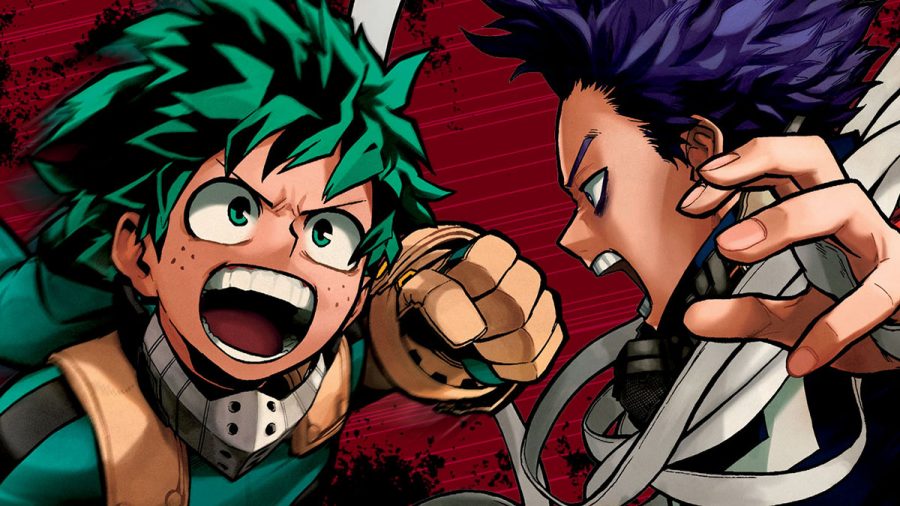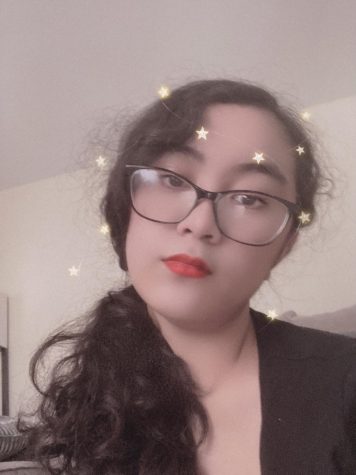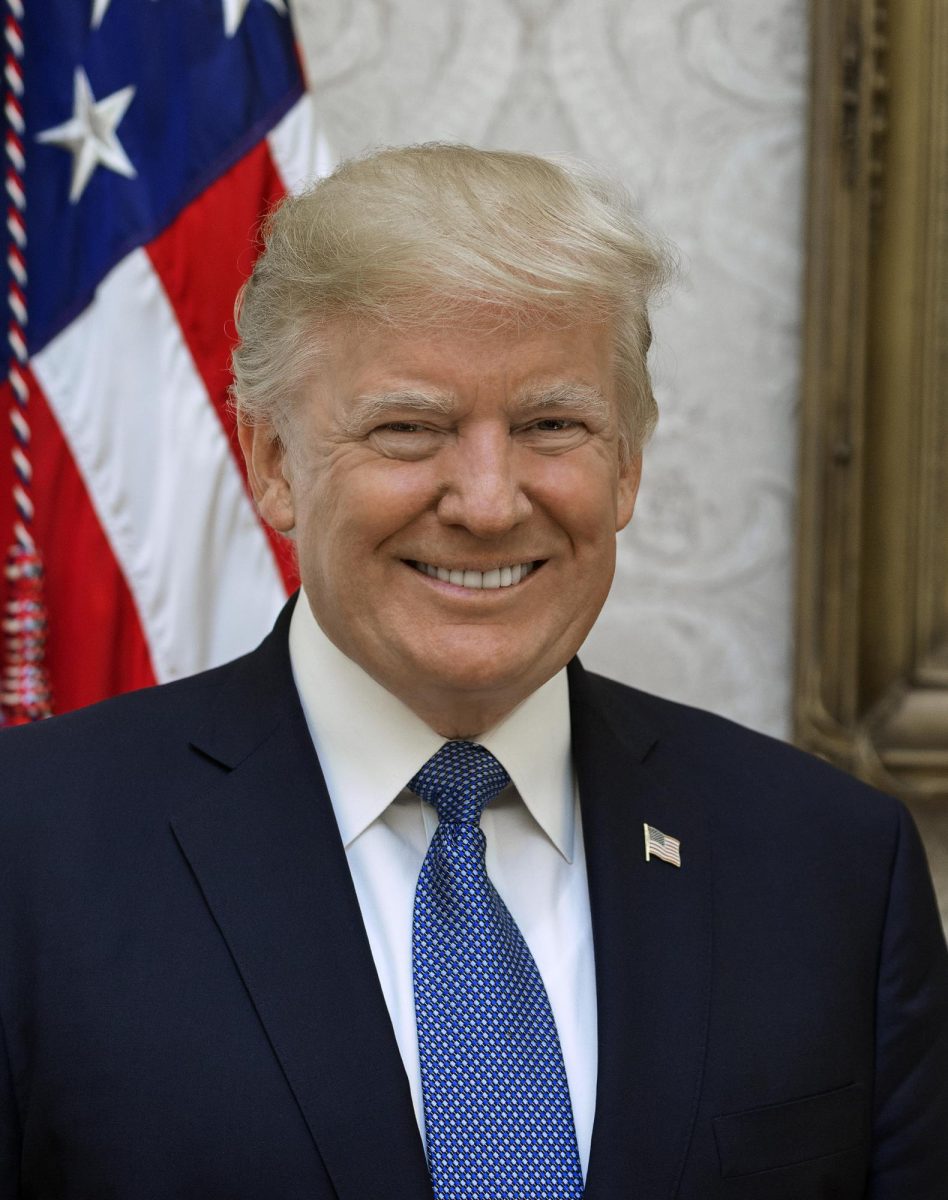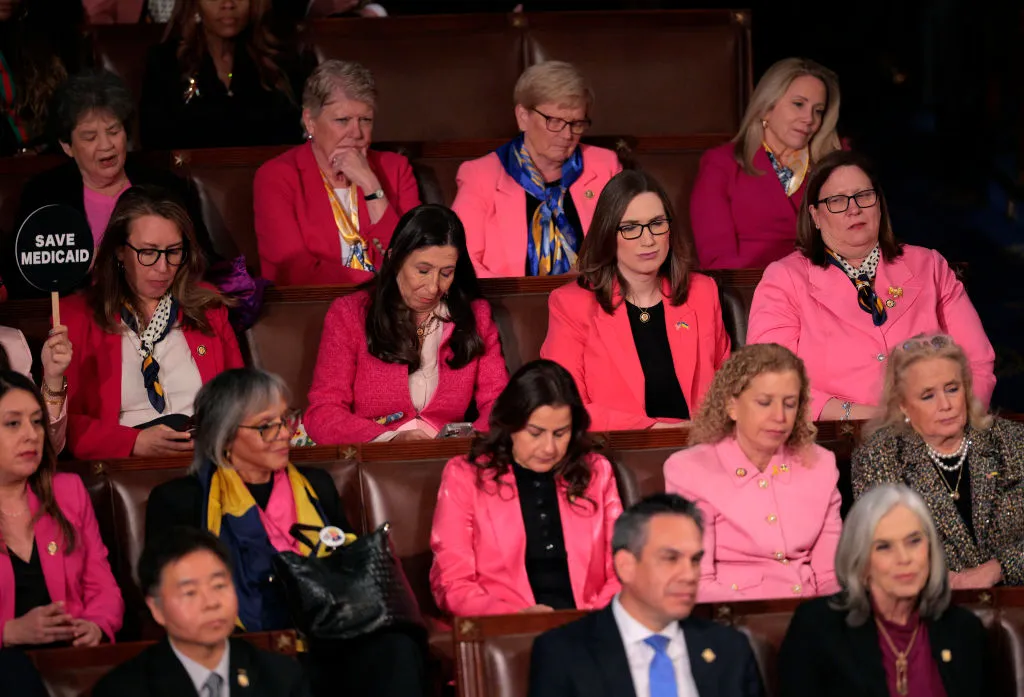An Updated Review on My Hero Academia Season Five (Spoilers Included)
https://www.monstersandcritics.com/anime/boku-no-hero-academia-season-5-anime-preview-spoilers-plot-summary-synopsis/
November 1, 2021
Back in May, I reviewed the first few episodes of Season Five of My Hero Academia, which overall kicked off the season spectacularly (review can be found here). Fast forward a few months and now the season has come to an end, so I’ve decided to give an updated review on the full season.
WARNING: Obviously, as the title states, there are spoilers, so if you haven’t seen the full season/series yet, go watch that, then come back. Unless spoilers don’t matter to you/you’ve read the manga. Then proceed onwards, but don’t say I didn’t warn you.
ALSO: I’ve added Wikia links to each character to give some idea on what their abilities are, but I CANNOT GUARANTEE whether or not they contain spoilers from the manga the anime’s based on, so read at your own risk (there’s also a few characters, mostly from the League of Villains, that I did NOT provide Wikia links for due to the heavy manga spoilers they contained that were unavoidable to read).
Now onto the review:
Sound – 9/10
As suspected, Season Five had a second opening and closing during the latter half of the season, and while the first opening and closing songs have grown on me since that review, I find these songs to be catchier than the previous ones, though perhaps it’s because they caught my attention faster than its predecessor. Despite contradictory opinions from others, I personally also enjoyed the visuals that went with the opening song, “Merry-Go-Round”, though I find it worth noting that the opening chooses to center somewhat around the main three characters of Class 1-A, Izuku Midoriya, Katsuki Bakugo, and Shoto Todoroki. This is, of course, to be expected, but I found it worth noting all the same. The closing song, “Uso ja nai”, was a nice, gentle (yet somber-sounding) change from the more upbeat opening, yet its gentle tones made for a nice touch. The visuals are lovely as well, though I prefer the ones from the first closing song of the season. Nevertheless, the music is pleasantly well-done, though as expected from My Hero Academia.
Characters – 10/10
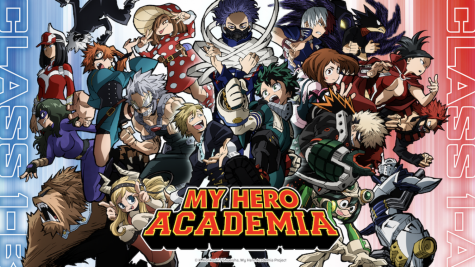
A promotional teaser of Season Five featuring both hero classes
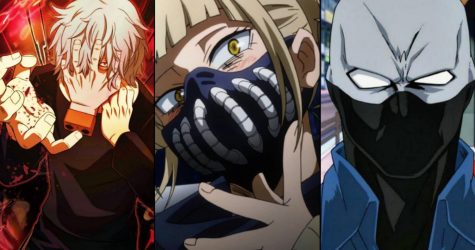
(from left to right) Shigaraki, Toga, and Twice from the League of Villains
Character development is spot on, as per usual, notably with students from Class 1-B, Hitoshi Shinso, Pro Heroes such as Endeavor and Hawks, and the League of Villains. Of course, that doesn’t mean that there haven’t been any improvements from Midoriya and his class.
Class 1-A: Most notably, main character Midoriya, who unlocked a new part of One For All during his training battle, triggered after being constantly provoked with harsh words from Class 1-B’s notoriously outspoken Neito Monoma (more on him later) as he was trying to provoke a response from him to activate Shinso’s Quirk, which is basically brainwashing people, but in order for it to work, the victim has to respond to his words (Monoma’s Quirk, Copy, allowed him to have Shinso’s ability at that time). Midoriya soon learns that this new part was the Quirk of one of the heroes who had One For All before him. Other improvements are also seen in Bakugo and Todoroki, who proceeded to obtain their Provisional Hero Licenses during the season and, alongside Midoriya, entered a work-study under Todoroki’s father, Endeavor. Their Quirks have also improved, especially Todoroki, who’s starting to become more comfortable with using the fire portion of his Quirk after having preferred to only used the ice portion for some time.
Class 1-B: The first six episodes of Season Five showcased the students of Class 1-B in a way that we hadn’t seen before, and the rest of the Joint Training Arc is no exception. The third match showcased the Quirks of characters such as Tetsutetsu Tetsutetsu (Quirk: Steel), Pony Tsunotori (Quirk: Horn Cannon), Juzo Honenuki (Quirk: Softening), and Sen Kaibara (Quirk: Gyrate). While the show has already shown off a good amount of Tetsutetsu’s abilities in previous seasons, his efforts during the battle felt fresh to watch nonetheless. The others also get a chance to portray the Quirks of the rest of the team, but Honenuki’s Quirk seems to be the most promising out of the three (unsurprisingly, since he was one of four students to get into the UA hero course on recommendations) in terms of his abilities with it, and I hope to see more usage of it later on. We also get to see abilities from two more team match-ups, but the ones that stood out the most to me were Setsuna Tokage (Quirk: Lizard Tail Splitter), Yosetsu Awase (Quirk: Weld), and of course, Monoma (mentioned beforehand). Overall, it was lovely to be able to see the abilities of the whole class, however, I wish we were able to get to know these characters on a more personal level, as personality-wise the most we get from these characters are Tetsutetsu’s enthusiasm and wholesome friendship with Class 1-A’s Eijiro Kirishima, class representative Itsuka Kendo’s kindness and leadership abilities, and Monoma’s bold, outspoken behavior (alongside both his superiority and inferiority complex, but that’s an analyzation for another article).
Hitoshi Shinso: The fifth and final match allowed for Shinso to showcase his abilities once more, this time on the side of Class 1-B. Here, not only are his abilities shown but his compatibility with the team as well. Although we did see more interactions between him and his team during the first match, we do see that he’s just as compatible with his Class 1-B teammates. Even though the match does showcase some strong prowess from him, due to a new part of Midoriya’s Quirk manifesting midway through the match, neither Shinso nor his teammates had much of a chance to showcase as much as I would’ve liked to have seen. Nonetheless, Shinso was able to provide aid to his teammates, even helping his team win in the first match, and was told he’d be moved into the hero program the following year, achieving his goal.
Pro Heroes: The main Pro Hero that stands out within the season is Endeavor, who has taken over the top spot in the Hero rankings after the previous number one hero All Might retired in Season Three. Midoriya, Bakugo, and Todoroki enter a work-study program under him (the one that Midoriya had originally been doing hero work for tragically passed away in Season Four and this was Bakugo and Todoroki’s first work-study after earning their provisional license). The second-highest in the Hero rankings, Hawks, also stands out throughout the season, working for the Heroes side as a League of Villains spy. From there, he was able to discover that they were planning to place a large attack into action four months from there. Other appearances include Selkie, a Pro Hero that Class 1-A’s Tsuyu Asui worked an internship for, and Ryukyu, whom Tsuyu, Ochaco Uraraka (Class 1-A), and Nejire Hado (Class 3-A aka one of UA’s “Big Three”) are under for their work-studies.
The League of Villains: The last couple of episodes gave the audience a chance for the League of Villains to shine through, especially as the show begins to move into the Paranormal Liberation War Arc (continued in the next season). Most notably, we get to see a backstory on the leader of the group, Tomura Shigaraki, which allowed the audience to understand his character better. We also get a chance to meet Dr. Ujiko, All For One’s assistant and Shigaraki’s sponsor. He’s the one who agrees to give Shigaraki more power if he defeats Gigantomachia (more on this later). We also get a chance to see some insight on villains Himiko Toga and Twice (Jin Bubaigawara), which was also pretty cool. Personally, I was hoping to also see something on Dabi, another prominent member of the League of Villains, but other than some interactions between him and Hawks and a few fighting scenes involving him there wasn’t much about him revealed, though I suspect that means that his time will come in the next season.
Overall, the characters have continued to grow throughout the season, and I hope to see more from these characters in the future.
Now on to the actual episodes. These will mostly just be things I’d like to point out alongside my rating of each episode.
Joint Training Arc
Episode Seven – “Match 3” (8/10)
Notable Things: The third match consisted of Class 1-A’s Todoroki, Tenya Iida, Mezo Shoji, and Mashirao Ojiro against Class 1-B’s Tetsutetsu, Pony, Honenuki, and Kaibara (all mentioned previously). Overall, most of the episode consisted of a battle between the two, as both teams refused to lose, and after a while, I found myself getting slightly bored, seeing as this battle dragged out for a while, but it was interesting to observe the Quirks of everyone involved. For me, Tetsutetsu and Iida are the two that stood out to me the most, seeing the improvement in both of their Quirks since we last saw them in use.
Episode Eight – “Match 3 Conclusion” (7.5/10)
Notable Things: The second half of the third match continues here. Here is where we get to see Todoroki’s firepower shine through, proving to be effective against Tetsutetsu, though the latter refuses to give up. Eventually, both of them are knocked out, but the battle continues around them. Regardless, the twenty-minute limit is reached, with both teams only imprisoning one of their opponents, resulting in a draw. Overall, there wasn’t too much to note, since it was just a continuation from Match Three, but the action was fulfilling to watch.
Episode Nine – “Early Bird!” (8.5/10)
Notable Things: The fourth battle begins here, consisting of Class 1-A’s Bakugo, Kyoka Jiro, Hanta Sero, and Rikido Sato against Class 1-B’s Tokage, Togaru Kamakiri, Kojiro Bondo, and Awase. Unlike the previous battle, which dragged on for quite some time, this one ended rather quickly, with Bakugo’s team taking the win in just five minutes. I was worried that Bakugo would be wanting to do things his way without his teammates’ input, and while he was a bit more independent in the battle, that doesn’t mean that his teammates never lent a hand. As I mentioned earlier, in Class 1-B both Tokage and Awase stood out to me in this battle; Tokage’s Quirk was quite powerful and useful in giving the team a good fight (though I suppose that’s expected for someone who got into UA based on recommendations), and as for Awase, his Quirk (as well as his quick-thinking) helped the rest of the team in battle (plus, even if it was temporary, he did manage to trap Bakugo, which isn’t an easy feat).
Episode Ten – “That Which Is Inherited” (9/10)
Notable Things: The fifth and final battle of the Joint Training Arc has finally begun, featuring Class 1-A’s Midoriya, Ochaco, Mina Ashido, and Minoru Mineta against Class 1-B’s Monoma, Reiko Yanagi, Nirengeki Shoda, Yui Kodai, and Shinso (once again, except this time on Class 1-B’s team). This was the battle I was highly anticipating, as some of my favorite characters were involved and I knew this was going to be big. I thought the reveal of a subpart of Midoriya’s Quirk was surprising, yet amazing, although it kind of took away from the main point: the battle itself. As for his teammates, Ochaco’s Quirk and quick thinking severely helped Midoriya get back into control after the Quirk had manifested, Mina’s Quirk was amazing to watch in action, as per usual, and even Mineta was efficient in the team setting, showing his improvement from the way he was during the USJ attack (though his perverted ways are still the same). For Class 1-B, it’s always good to watch Monoma in action, but it’s also good to see the Quirks of his teammates as well, especially Yanagi and her telekinetic-like Quirk. Despite the seeming danger that Midoriya’s Quirk manifestation had caused, the teachers allow for the battle to continue.
Episode Eleven – “Our Brawl” (9/10)
Notable Things: The final battle continues here. One thing learned from this is the fact that Monoma can’t entirely reciprocate One For All, to Midoriya’s relief (as he’d probably explode if he managed to reciprocate it completely). That sort of surprised me, but I suppose with a Quirk like Copy there has to be some sort of limitation to it, or else it’d be overpowered. The battle ended with a Class 1-A victory, however, I kind of wish we were able to see more one-on-one fighting between either Midoriya and Monoma or Midoriya and Shinso (or all three in a 2 v. 1). With that, the battles ended, with Class 1-A winning overall (though I suppose, as Monoma pointed out, the fifth battle could be different if they rematched and without the presence of Midoriya’s sub-Quirk manifestation). With that, Shinso successfully was able to transfer into the hero course, starting in the next year.
Episode Twelve – “The New Power and All For One” (8/10)
Notable Things: For the most part, this episode was more of a filler episode. Midoriya’s now struggling to summon the sub-Quirk manifestation (dubbed “Blackwhip”) from his battle with Class 1-B, much less control it. Other scenes in the episode include Monoma attempting to copy Eri’s Quirk (to no avail), Class 1-A just having some downtime to relax, and Todoroki and Bakugo finally obtaining their Provisional Hero Licenses. Overall, there wasn’t too much new information except for an explanation as to why there are certain Quirks that Monoma can’t copy, but the episode was still enjoyable to watch overall.
Episode Thirteen – “Have A Merry Christmas” (10/10)
Notable Things: This episode was also a filler episode, focusing firstly on Class 1-A partaking in interviewing training (which was somewhat boring to watch, but Bakugo’s inability to behave properly in an interview setting made up for it), before going on to show the class (and Eri) celebrating Christmas together. Personally, I’m always a fan of Christmas-related episodes, and this one was no exception (also watching Eri referencing just about every holiday except Christmas in greeting was adorable to watch). Other than that, there wasn’t much else to note for this episode.
Endeavor Agency Arc:
Episode Fourteen – “Off To Endeavor’s Agency!” (6.5/10)
Notable Things: There wasn’t a whole lot to note here, but this episode wasn’t as exciting as the others. Maybe it’s because I was never a big fan of Endeavor, but this episode just wasn’t as great. Sure, it was good to see Bakugo and Todoroki in a work-study setting as well as to see Hawks playing double agent between the heroes and the villains, but other than that there wasn’t much to say here.
Episode Fifteen – “One Thing At A Time” (7/10)
Notable Things: This episode still wasn’t the best, but it was an improvement from the previous. It’s good to see Midoriya, Bakugo, and Todoroki starting their work studies with Endeavor, and I like that Endeavor’s taking into consideration their skillsets and what they would like to work on. Other than that, not much to say here either.
Episode Sixteen – “Long Time No See, Selkie” (9/10)
Notable Things: This episode wasn’t exactly filler, but it doesn’t exactly add to the plot of the season, either. This episode gave the viewers a break from the Endeavor Agency Arc as we focus on Ryukyu, Tsuyu, Ochaco, and Nejire teaming up with Pro Hero Selkie in an attempt to stop a cargo ship filled with illegal Quirk Booster drugs. Although I was confused as to why the episode was made amid the Endeavor Agency Arc, I thoroughly enjoyed this break from it, especially the action and the fun-filled moments in between (after watching the three girls having fun at the beach, I now want a filler episode of all of the students in the hero course on a beach trip). The episode served as a prologue to the upcoming movie My Hero Academia: World Heroes’ Mission.
Episode Seventeen – “The Hellish Todoroki Family” (8/10)
Notable Things: This episode is where things finally start to pick up during the arc. Here, we get to see how things have changed in the Todoroki family and the improvements that Endeavor is trying to make after having been horrible to his family. I like the idea of letting Endeavor start to try and atone for what he did in the past to his family, yet I completely understand the ones who aren’t ready to forgive him so easily (if at all). Bakugo and Midoriya’s banter while eating dinner at Todoroki’s house was also pretty entertaining.
Episode Eighteen – “The Unforgiven” (8.5/10)
Notable Things: Now this is the episode that stood out from this arc the best, not because of the action, but because of the emotional baggage that comes with the episode. Endeavor trying to patch things up with his family is something that I definitely understand. Perhaps I was too harsh on him in the past. I do feel bad that not everyone is willingly ready to forgive him, as well as that he feels that the best way to atone for what he did to them is to let them live happily amongst themselves by taking himself out of the picture.
Meta Liberation Army Arc/Paranormal Liberation War Arc:
Episode Nineteen – “More of a Hero Than Anyone” (9/10)
This episode focused less on the students and more on U.A teachers Shota Aizawa and Hizashi Yamada (better known as Present Mic) as they discovered that Shigaraki’s right-hand man, Kurogiri, was created using the body of their childhood friend, Oboro Shirakumo. They went to the place where he was being held captive, where they interrogated him, for they were told that Nomus (what Kurogiri is) could still have connected memories from the host body. Luckily, they were able to reach Shirakumo, but only temporarily. Nothing much to note here, however, it was nice to find some backstory for both teachers.
Episode Twenty – “My Villain Academia” (8/10)
Here, we get a closer look at the League of Villains, as Shigaraki’s trying to win the approval of All For One’s former bodyguard, Gigantomachia, as a way of increasing his strength. We’re also introduced to the Meta Liberation Army, a group of villains that believed in utilizing Quirks without restriction. Their goal was to take down groups like the League of Villains, who they see as a threat. A lot of this episode was more dialogue and plot devices as compared to action and fighting, but because it’s a focus on the League of Villains rather than Class 1-A for a change, it was nice to see all the same.
Episode Twenty-One – “Revival Party” (9.5/10)
The League of Villains’ journey continues as they accept the Meta Liberation Army’s declaration of war. This episode chose to focus quite a bit on Toga (Quirk: Transform, lets her transform into other people via their blood). What I liked about the episode is that there was a better mix of action, dialogue, and backstory than in the previous episodes, which was a fresh change of pace. Toga also proved to be quite the interesting character, having not known a “normal” life and just wanting to become the people she loves (which, while extremely creepy, is also interestingly cool, in a sense).
Episode Twenty-Two – “Sad Man’s Parade” (9/10)
Once again, the focus shines brightly on the League of Villains (and will probably continue to do so for the next few episodes). This time, the show focused closely on Twice (Quirk: Double, allows him to make clones of himself). I had always found him to be a strong villain and enjoyed his character, so to see some backstory on him was great to see (plus he’s an entertaining villain, so that’s a bonus). Overall, the episode itself was more action-packed than dialogue but was interesting nonetheless.
Episode Twenty-Three – “Tenko Shimura: Origin” (10/10)
This episode was mostly both fighting between Shigaraki and Re-Destro, the Meta Liberation Army leader, and backstory on Shigaraki. This was definitely one of (if not) the darkest episodes in the entire season, let alone the whole show. Shigaraki, despite being the leader of the League of Villains, once wanted to be a hero in his childhood, which I found surprising. By this point, he was still known by his childhood name, Tenko Shimura. His father, Kotaro, was disapproving of this goal, however, due to Tenko’s grandmother, Nana Shimura (the previous One For All holder before All Might), having abandoned him for the sake of his well-being, as she felt that she couldn’t properly care for him due to consequences from her hero life. At the end of the episode, Tenko’s Quirk manifests, causing him to accidentally kill his mom, older sister, dog, and grandparents. Once his father found out what he’d done, he hits him before being killed by Tenko as well, this time being intentional. By the end of it all, present-day Shigaraki recalls that while he felt bad for killing most of his family, perhaps this is what he had wanted all along.
Episode Twenty-Four – “Tomura Shigaraki: Origin” (9.5/10)
More backstory on how Tenko Shimura became Tomura Shigaraki as well as the conclusion of the fight between him and Re-Destro. The episode itself sets up well for both the finale and the rest of the Paranormal Liberation War Arc, to be continued in the next season. We discover that Shigaraki gained his name after having been taken in by All For One, the first name coming from “tomurau“, the Japanese term for “mourn”, the last name coming from All For One himself. Jumping back to the present day, after a climactic action scene, Shigaraki unleashes the full power of his Quirk, destroying the surrounding area, defeating Re-Destro (who survives nonetheless, however, with the loss of both legs), and finally getting the approval of Gigantomachia, who showed up not too long before. The League of Villains combine their forces with the Meta Liberation Army to form a cool-looking group called the Paranormal Liberation Front.
Episode Twenty-Five – “The High, Deep Blue Sky” (8.5/10)
The focus starts out on Shigaraki obtaining higher power and increasing his strength after having gained Gigantomachia’s approval before cutting back to Class 1-A, revealing what they had learned from their work studies. We then get to see Bakugo and Midoriya talking to All Might about Midoriya’s Blackwhip Quirk, as well as the possibility of Midoriya unlocking the Quirks of the other previous One For All users. Later that night, Class 1-A celebrates their success, knowing that they’ll be finishing their first year of high school in a few short months. A post-credit scene shows Class 1-A in the springtime (having originally being sometime in the winter) getting ready to go on a mission. Overall, except for the post-credit scene, the finale felt like a filler episode, not that I minded, but because this episode was the finale, I felt like the episode should’ve had something more to it.
Final Thoughts:
Overall, the season was quite interesting in the beginning and the end, however, the middle stuff with the Endeavor arc felt lacking. Nevertheless, I’d love to see how the next season plays out, especially with the continuation of the Paranormal Liberation War Arc. Until the next season arrives, nevertheless, only time will tell how everything plays out.
Final Score: 8.6/10

